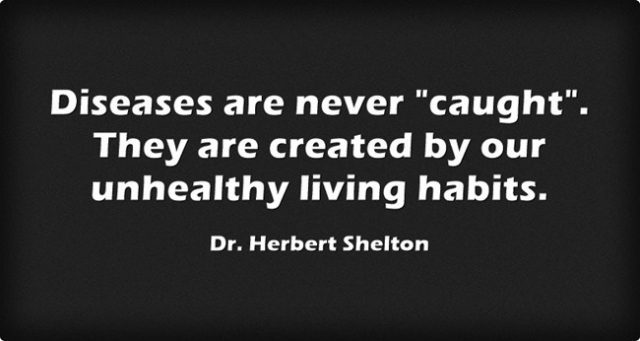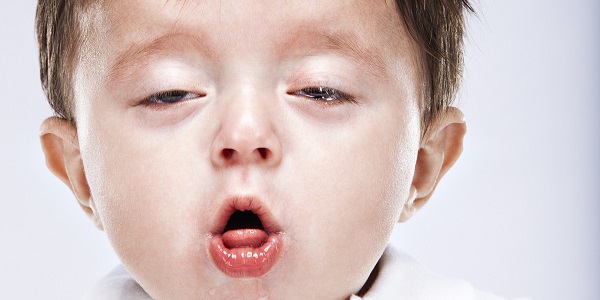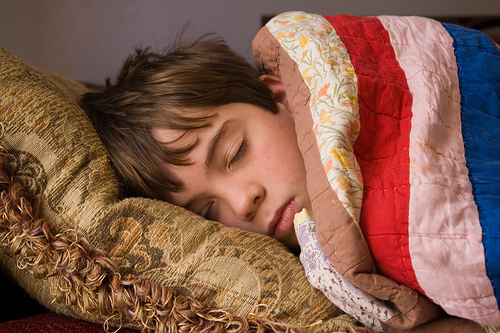
The word ‘cure’ means ‘to heal or make well’. It also refers to any substance used to restore a person to health. However, as we explain in our book, What Really Makes You Ill? Why Everything You Thought You Knew About Disease Is Wrong, the medical establishment almost exclusively refers to the ‘treatment’ of disease rather than the ‘cure’ of disease. This is particularly the case with ‘chronic diseases’, virtually all of which the medical establishment describes as ‘incurable’.
The practices employed by the medical establishment involve measures that are mainly palliative, which means ‘to relieve without cure’. Yet this failure to achieve a full recovery to health is regarded as a situation to be proud of; as indicated by a 2010 article entitled, Modern Medicine: Towards Prevention, Cure, Well-being and Longevity, which states that,
“Modern medicine is mostly palliative, and rather proud of it.”
The article suggests that this is not a satisfactory situation and, under the heading Paradigm shift from control/palliation to prevention/cure, adds the comment that,
“The thrust and focus must shift from control/palliation to cure and prevention. The ultimate goal is longevity with well-being, of which freedom from disease is a very important ingredient. Major research funding must guide these efforts, even as we do not neglect greater refinements in modern ‘palliative’ medicine.”
Problems can only be resolved when their root causes have been identified and addressed or removed; this applies equally to ‘health problems’ as to all other types of problem.
Unfortunately, through the system of ‘modern medicine’, the medical establishment will never be able to resolve ‘health problems’ and achieve any genuine ‘cure and prevention’ of disease because their practices, including research studies, are based on erroneous theories about diseases, medicines and the human body; as eloquently described by a quote attributed to Voltaire,
“Doctors are men who prescribe medicines of which they know little, to cure diseases of which they know less, in human beings of whom they know nothing.”
Voltaire’s words may be considered to no longer apply in the 21st century because ‘modern medicine’ has substantially improved since the era in which he lived; but this is not the case, his words remain applicable in the current era and can best be demonstrated by an example. The most appropriate example to use is the ‘disease’ referred to as ‘the common cold’, which is described on a page on the NIH website entitled Common Colds: Overview that states,
“The term ‘common cold’ covers various symptoms caused by an infection of the upper airways. A cold usually takes a few days to fully develop. Typical symptoms include a stuffy or runny nose, sneezing, coughing and a sore throat. Sometimes a cold is also accompanied by a mild fever, weakness, a headache and aching joints.”
The ‘common cold’ is believed to affect everyone and to occur extremely frequently, as the page states,
“Colds are very common, especially in children. It’s quite normal for children to catch six to ten colds per year – at school, daycare or kindergarten. Adults have two to four colds a year on average, mostly during the colder season.”

It is claimed that the ‘common cold’ is a ‘viral’ illness that may be caused by many different types of virus; as discussed by the Mayo Clinic web page entitled Common Cold – Symptoms and Causes that states,
“Although many types of viruses can cause a common cold, rhinoviruses are the most common culprit.”
The other viruses that are claimed to be involved are listed by the CDC web page entitled Common Colds: Protect Yourself and Others,
“Other viruses that can cause colds include respiratory syncytial virus, human parainfluenza viruses, adenovirus, human coronaviruses, and human metapneumovirus.”
This statement is of particular significance with respect to the current ‘pandemic’ that is claimed to be caused by a ‘dangerous’ coronavirus, despite the fact that this family of ‘viruses’ are associated with the ‘common cold’.
Of particular note is that there is no evidence to support the claim that any case of the ‘common cold’ is caused by any virus, no matter what family it is said to belong to, because tests are rarely, if ever, conducted to discover the presence of any ‘virus’ in people who are diagnosed with the ‘common cold’, as the page admits,
“Most people with a common cold can be diagnosed by their signs and symptoms.”
This means that a person can be diagnosed as having the ‘common cold’ without any evidence of the presence of the alleged pathogen.
It is of the greatest importance to emphasise that, as explained in detail in our book, there is, and never has been, any scientific evidence that proves any virus to be the cause of any disease – including the ‘common cold’. As mentioned above, problems can only be resolved by addressing or removing their cause. The adherence to their belief in the wrong causal factor is the reason that the medical establishment will never ‘cure’ the common cold; an admitted fact, as indicated by the Mayo Clinic web page entitled Cold remedies: What works, what doesn’t, what can’t hurt that states,
“Nothing can cure a cold.”
Although there is no ‘cure’ the medical establishment believes that ‘medicines’ will help, as indicated by the CDC web page which, under the heading How To Feel Better, states that,
“Over-the-counter medicines may help ease symptoms but will not make your cold go away any faster.”
It is generally believed that ‘disease’ is an entity that attacks the body and causes the symptoms with which each disease is associated. This leads to the conclusion that the cessation of symptoms is to be desired because it means that the disease has been defeated, which is the reason that ‘medicines’ are claimed to ‘work’, but this is all based on erroneous ideas about disease, medicines and the human body.

Contrary to the ideas promulgated by the medical establishment, the human body is neither a machine nor a bag of chemicals that is attacked by a ‘disease’. Instead it is an amazing self-regulating organism that has an immense ability to self-heal. The symptoms that are associated with ‘disease’ represent the body’s efforts to expel toxins, repair damage and restore health. As we explain in detail in our book, it is only the body that heals itself.
The common cold is regarded as an ‘acute disease’; a term that is used to describe short-lived conditions that are accompanied by self-limiting symptoms such as fever, sneezing, coughing, vomiting and diarrhoea, all of which are clearly indicative of the body’s response to the presence of harmful substances and influences, and its efforts to expel them. Herbert Shelton explains this in his book entitled The Hygienic System Vol VI: Orthopathy, in which he emphasises the point that,
“We do not catch a ‘cold’, as popularly believed, nor does it catch us. Instead of catching something we are getting rid of something…”
He further explains in his book entitled Natural Hygiene: Man’s Pristine Way of Life, that the term ‘acute disease’ refers to,
“…vital action in some one or all of the living tissues or organs in resisting and expelling injurious substances and influences and in repairing damages.”
Dr John Tilden MD also discusses the ‘common cold’ in his book entitled Toxemia Explained in which he states that,
“When the elimination takes place through the mucous membrane of the nose, it is called a cold—catarrh of the nose…”
These efforts will be successful if allowed to take their course; as Herbert Shelton explains in Orthopathy,
“If colds are let alone and not suppressed or interfered with, they will be shorter in duration, more regular in their course, will leave the system in an improved condition and develop less often.”
The symptoms associated with the ‘common cold’ represent the elimination of toxins through ‘vicarious’ processes that assist the normal channels of elimination, which are mainly urination and defecation. When the body has expelled ‘injurious substances’, the vital actions referred to as ‘symptoms’, will subside and then cease until the body needs to perform a further detoxification. However, it is important to note that the cessation of symptoms should not be interpreted to mean that all toxic substances have been completely eliminated from the body. This will only be the case for people who minimise their exposures to toxins and whose bodies therefore eliminate any toxins they are exposed to through the normal channels, rather than requiring vicarious elimination processes that expel toxins through the mucus membranes of the nose.
If, on the other hand, colds are not ‘let alone’ and the symptoms are suppressed through the use of ‘medicines’, these acute conditions can develop into far more serious, chronic conditions, as Dr Tilden explains,
“Every chronic disease starts with Toxemia and a toxemic crisis. The crises are repeated until organic changes take place. The chain of symptoms ranges from cold or catarrh to Bright’s disease, tuberculosis, cancer, syphilis, ataxia, and other so-called diseases; all, from beginning to end, symptoms of the cumulative effects of crises of Toxemia.”

The most appropriate and effective ‘treatment’ for the symptoms associated with the ‘common cold’ is explained by TC Fry in The Life Science Health System, in which he states that,
“A cold is a process of vicarious elimination. “For the ‘common cold,’ the child should be put to bed, all food stopped, except perhaps some orange juice (if there is no fever), and kept warm. That is all there is to the treatment of any so-called acute disease— rest, fasting, warmth. No cold can last long when the child is cared for in this manner.”
The same, of course, applies to an adult and, surprisingly, this is also part of the advice provided by the Mayo Clinic web page entitled Cold remedies: What works, what doesn’t, what can’t hurt that states,
“Your body needs rest to heal.”
Sadly, this is one of the recommendations of the medical establishment that people do not follow and yet it is one of the few recommendations that would be of great benefit to people in their ‘recovery’ from a cold.
It is clear that the medical establishment cannot ‘cure’ the common cold; the main reason is because this is entirely the wrong approach to this ‘disease’; as Herbert Shelton succinctly explains in Natural Hygiene,
“It is everywhere freely admitted that ‘there is no cure for the common cold’. It is also admitted that ‘there is no cure for influenza’. Indeed, there are so many common diseases for which it is admitted that there is no cure that one begins to wonder how long it will take the world to recognize that the whole concept of cure and curing is false.”
The human body is an amazing self-regulating, self-healing organism that constantly seeks to attain and maintain itself in the state of ‘health’; the vital actions necessary to expel toxins, repair damage and restore health are therefore ongoing processes that continue throughout life, as Herbert Shelton explains,
“The struggle of the system to cast out its accumulated toxins continues so long as the organism remains alive.”
The lower the level of accumulated toxins in the body, the less effort the body needs to make to expel them and the healthier you will remain. In other words, the lower your exposures to toxins, the ‘cleaner’ the state of your body and the healthier you will be.
Dawn Lester
8th August 2020
References:
FRY, TC – The Life Science Health System
LESTER, D. & Parker D. – What Really Makes You Ill? Why Everything You Thought You Knew About Disease Is Wrong
SHELTON, HM – Natural Hygiene: Man’s Pristine Way of Life
SHELTON, HM – The Hygienic System Vol VI: Orthopathy
TILDEN, J – Toxemia Explained
Modern Medicine: Towards Prevention, Cure, Well-being and Longevity
https://www.ncbi.nlm.nih.gov/pmc/articles/PMC3031942/
Common Colds: Overview
https://www.ncbi.nlm.nih.gov/books/NBK279543/
Common Cold – Symptoms and Causes
https://www.mayoclinic.org/diseases-conditions/common-cold/symptoms-causes/syc-20351605
Common Colds: Protect Yourself and Others
https://www.cdc.gov/features/rhinoviruses/index.html
Cold remedies: What works, what doesn’t, what can’t hurt
https://www.mayoclinic.org/diseases-conditions/common-cold/in-depth/cold-remedies/art-20046403
